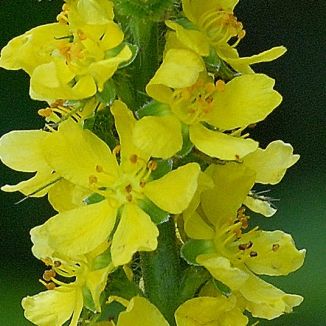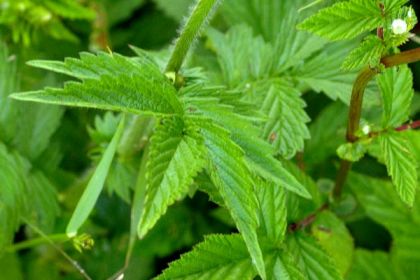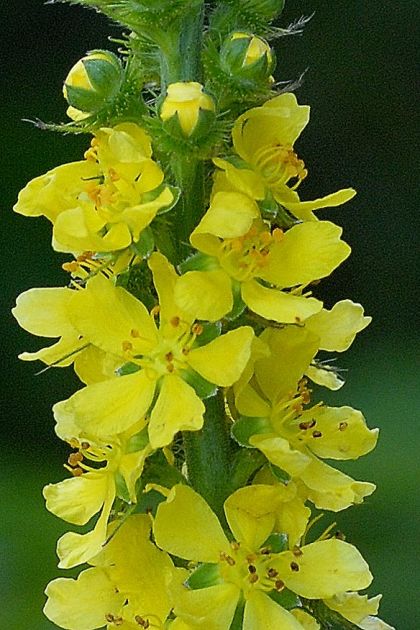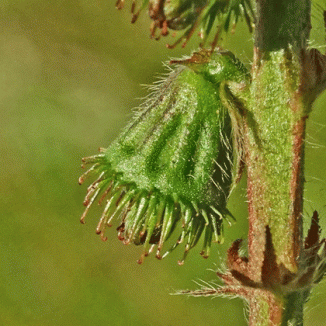Pale yellow upright downy perennial of roadside verges and hedgerows, each flower (5-8mm) has five petals. These flowers are borne in slender spikes and can contain up to 20 stamens each. The pairs of pinnate leaves have smaller toothed leaflets between them. From June to early September, Agrimony graces dry grassy places throughout the country, reaching to 1m high. To avoid confusion between this species and the quite similar Fragrant Agrimony, it is worth looking at the seedheads. The bell-shaped fruit of this species - Agrimony - has fruit capsules with grooves the entire length and spines that have curved ends. Fragrant Agrimony has fruit capsules with shallow grooves & spine hooks are straighter. (See image below).The hooked seedheads greatly assist distribution of the seeds by attaching themselves to passing animals. A native plant, it belongs to the family Rosaceae.
I first identified this plant growing along by the Grand Canal near Athy, Co Kildare in 1978 and photographed it in Duncormick, Co Wexford in July 2007.
If you are satisfied you have correctly identified this plant, please submit your sighting to the National Biodiversity Data Centre




